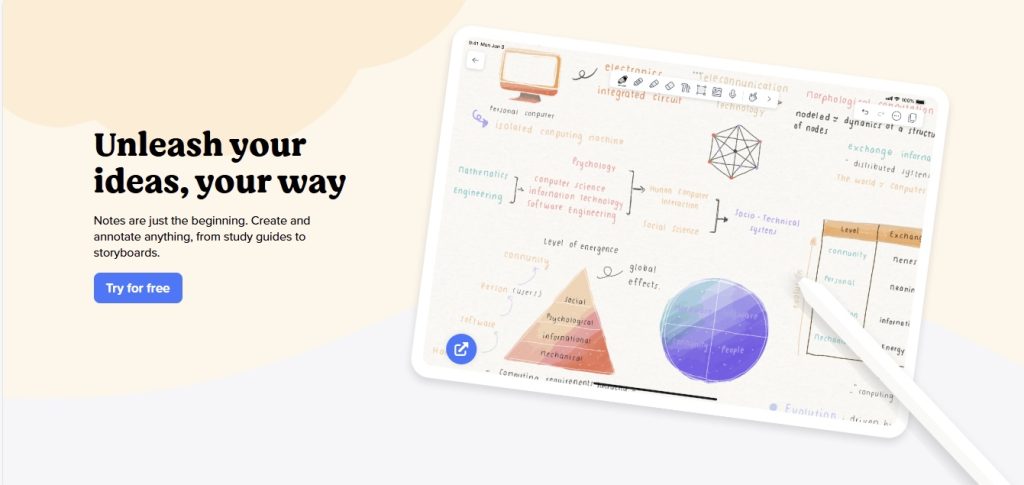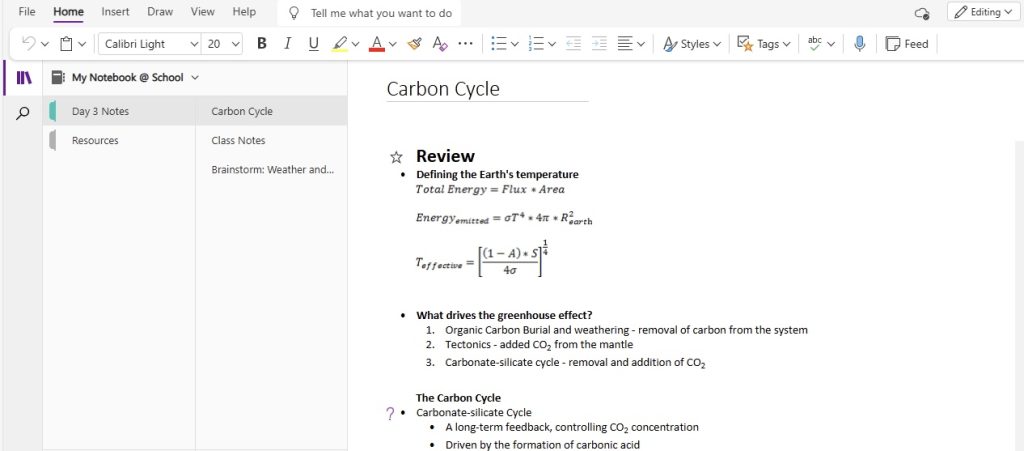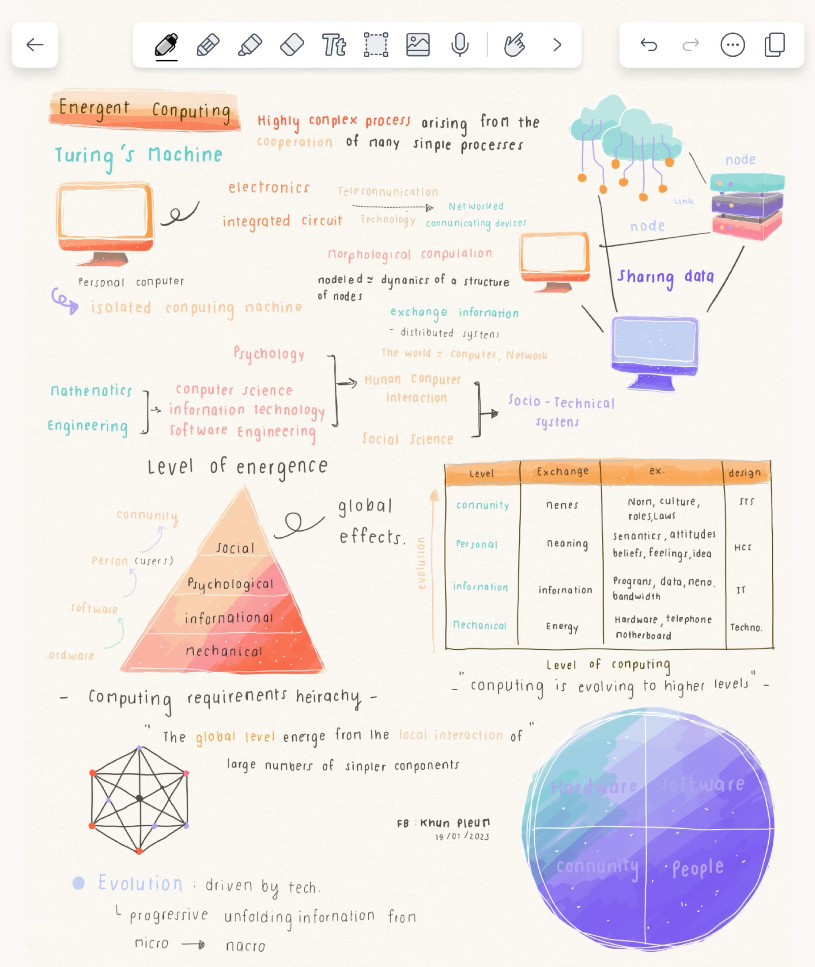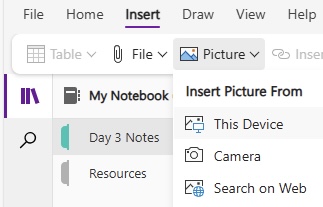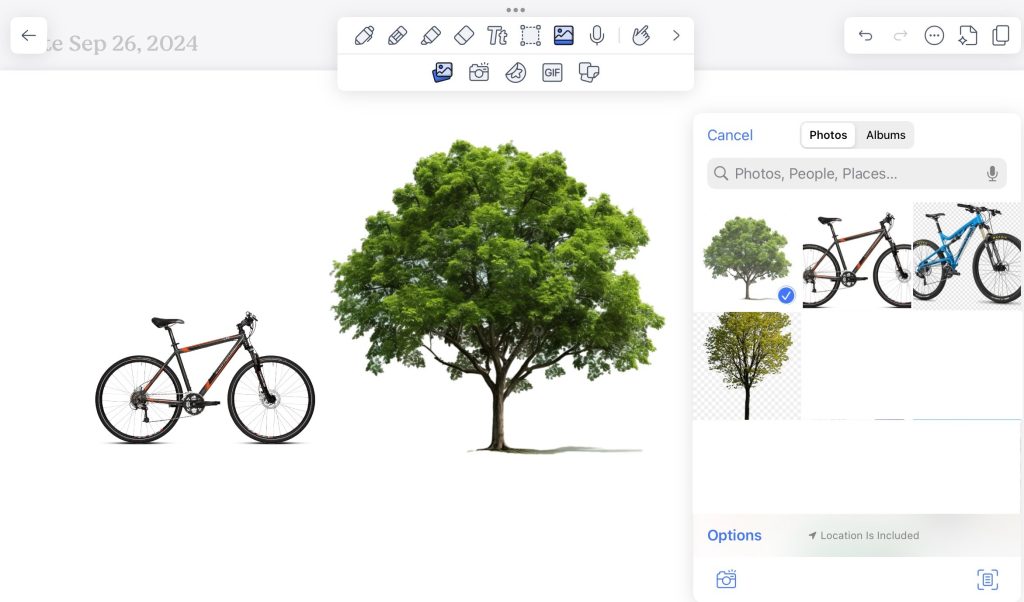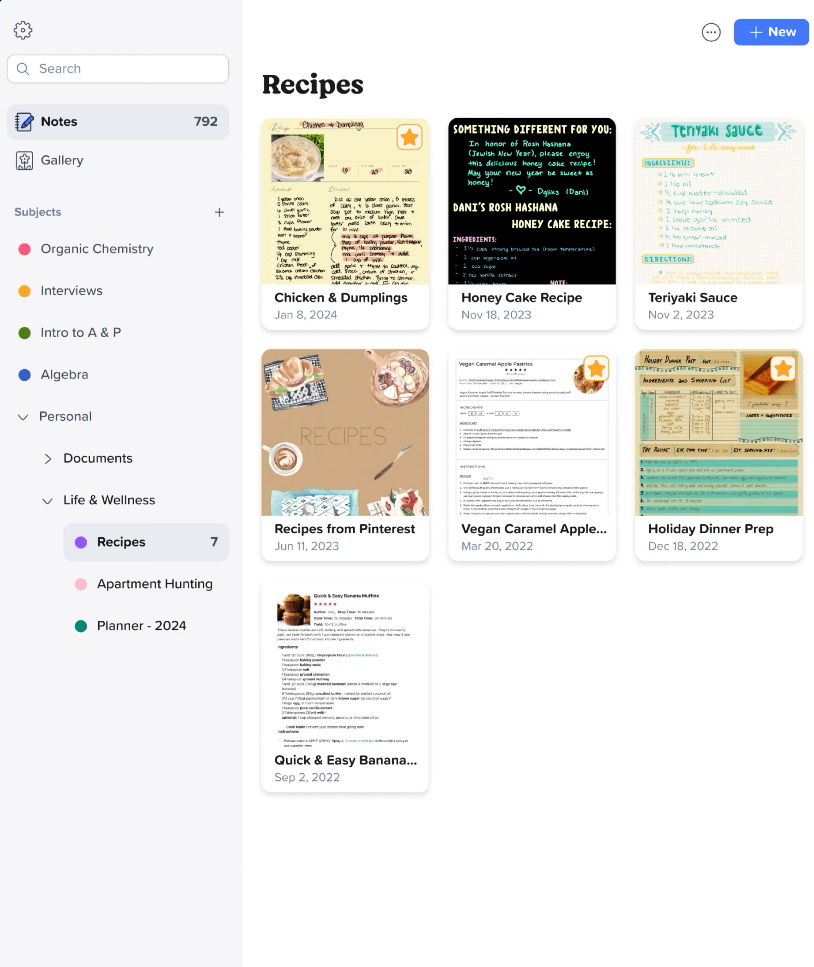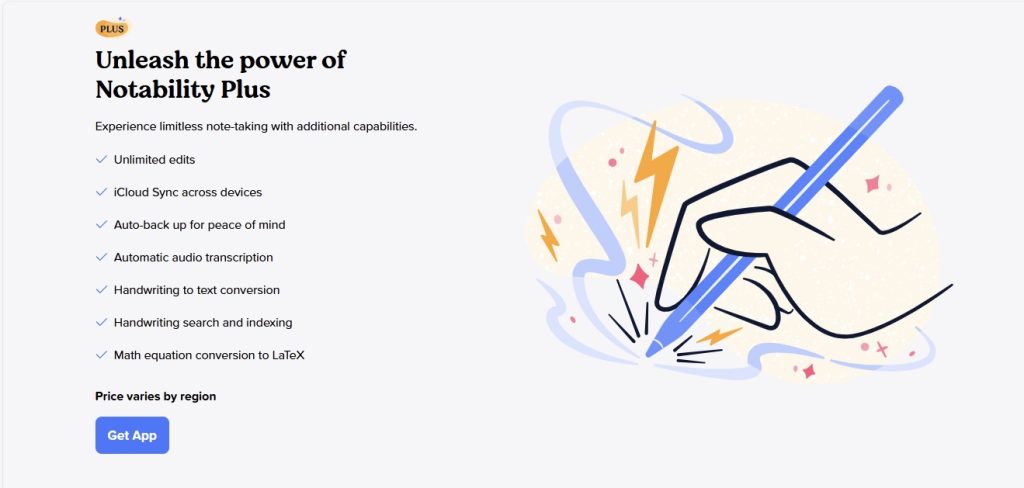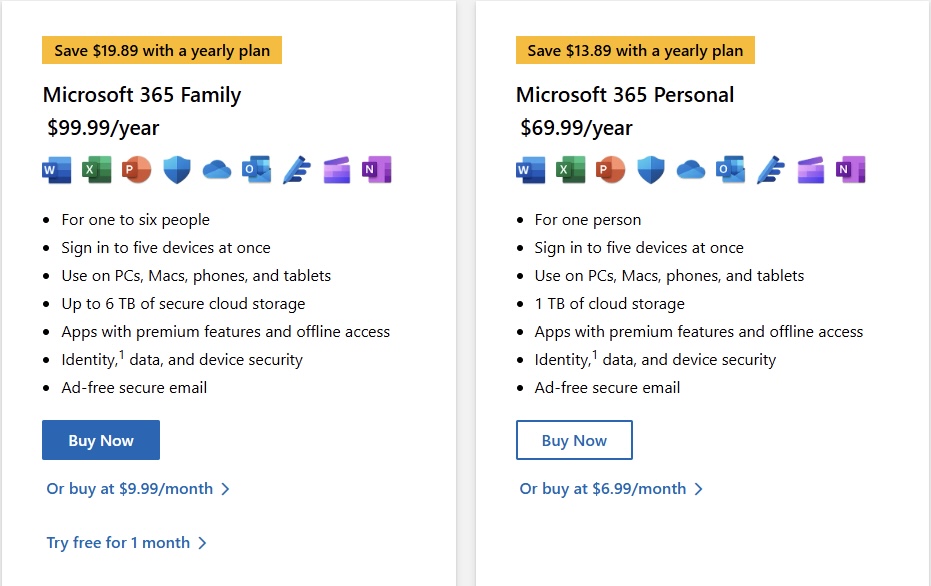In the bustling sphere of digital note-taking, two apps have risen to fame, transforming the way we document and organize our thoughts: Notability vs OneNote. Imagine these contenders as two champions of productivity, each entering the ring with their unique arsenal designed to refine the way we interact with the world of written information.
Key Takeaways
- Notability offers a minimalist and user-friendly interface, which is often seen as more straightforward and enjoyable for digital note-taking, catering especially to those who prefer a cleaner, no-frills experience.
- OneNote provides a feature-rich environment with an infinite canvas, ideal for people who engage in extensive brainstorming and require a flexible note-taking space that accommodates typing, writing, drawing, and clipping.
- Both Notability and OneNote deliver a polished user experience, but each serves different user preferences, with Notability focusing on simplicity and ease-of-use while OneNote emphasizes versatility and a wealth of features.
Table of Contents
Unpacking the Core Features
The Writing Experience: Pen to Paper in the Digital Age
When it comes to simulating the tactile sensation of pen on paper, we’re fortunate that modern technology has given us options that feel uncannily real. Notability’s claim to fame lies in its buttery-smooth inking, allowing me to glide across the screen with minimal latency, making the process feel almost indistinguishable from traditional writing. Coupled with Paperlike’s screen protector, the experience is even more paper-like, adding just that hint of texture needed for a truly authentic feel.
OneNote, on the other hand, does not fall short in delivering a pleasant writing experience. It supports a plethora of pen styles and colors, enabling a diverse range of expression. And with the adjustable pen size and sensitivity, I find it adapts to different handwriting styles with finesse. When weighing both apps, I appreciate the precision and natural flow each provides, truly honoring the classic pen-to-paper experience in a digital format.
Multimedia and Customization: Tailoring Your Note-Taking
When we dive into the realm of multimedia and customization, that’s where we start to see how note-taking apps like Notability and OneNote cater to personal styles and preferences. Notability shines with its ability to integrate multimedia elements effortlessly. I can drag and drop photos, GIFs, or web clips into my notes to create a visually engaging and comprehensive notebook. Customization also extends to the audio realm, as Notability allows me to sync recorded sounds with my notes for a multisensory review experience—imagine reliving a lecture with synchronized audio and written notes.
OneNote takes customization a stride further with its expansive toolbox. Whether it’s embedding videos, creating intricate tables, or enabling a wide range of page templates, it serves up an extensive palette for personalization. As for multimedia integrations, OneNote’s ability to insert online videos directly into notes is something I find remarkably handy. It’s intriguing to see how both apps provide a canvas where multimedia and notes coalesce, suiting different preferences for digital note arrangement and creativity.
In-Depth Comparison
User Interface Showdown: Ease and Elegance
The user interface often determines whether an app feels inviting or overwhelming. I prize Notability for its minimalistic and intuitive interface, which makes navigation a breeze. The clean layout provides the serenity I need when I want to focus without distractions. The simplicity in design doesn’t mean lack of capability; rather, I find it streamlines my workflow with all essential tools at my fingertips, making it less intimidating for new users who value ease and elegance.
In the other corner, OneNote’s interface is akin to a Swiss Army knife, brimming with features neatly tucked into its ribbon. The expansive array of options allows for a more tailored experience, though it can occasionally lead to choice overload. However, if I’m willing to climb the learning curve, this feature-rich environment becomes a playground for my creative and organizational desires. For the power user, OneNote’s interface is a command center that offers unparalleled control over note-taking endeavors.
Organizational Tools: Keeping Your Thoughts in Order
Notability and OneNote tackle note organization with different philosophies. Notability presents a straightforward, binder-inspired system that’s reminiscent of physical organization. I find this method comforting—dividers and subjects act just like folders and files, ensuring a natural transition from paper to screen. It’s particularly effective for those who appreciate simplicity and want to spend less time learning and more time doing.
OneNote, on the other hand, offers a more layered approach with its notebook-tab-page hierarchy. I can create multiple notebooks for different projects or aspects of my life, each with uniquely colored sections, and within those, an array of individual pages. This system beckons the meticulous organizer in me, allowing for a high level of detail in categorization. It’s commendable for those of us who enjoy structuring our thoughts in elaborate, interconnected ways.
Ultimately, whether you find solace in the straightforward or revel in the detailed, both Notability and OneNote possess the tools needed to create order from the chaos of thoughts and information.
Specialized Functions and Unique Offerings
Distinctive Capabilities of Notability
Notability sets itself apart with a few distinctive features that capture my attention. The integrated handwriting recognition is particularly impressive, enabling me to search through my handwritten notes with ease—like flipping through a book looking for highlighted passages. Its multimedia sync capabilities give an edge too. When I record audio while taking notes, the playback feature highlights what I was writing as the audio plays—a godsend for recalling lectures or meetings.
I’m also a fan of the “Convert to Text” feature, which allows me to effortlessly turn my handwritten notes into typed text, polishing them up for more formal use. Then, there’s the Apple Pencil’s palm rejection, a subtle yet vital feature that lets me rest my hand naturally on the screen, enhancing the feeling of writing on an actual notebook.
In summation, Notability’s unique mix of handwriting recognition, multimedia sync, text conversion, and Apple Pencil optimization create a compelling package for those who prefer a natural writing experience coupled with the advantages of digital convenience.
OneNote’s Exclusive Attributes
OneNote boasts features that give it a distinctive edge, particularly its seamless integration with the Microsoft Office suite. For someone like me, who is already immersed in the Microsoft ecosystem, the ability to link to my Outlook tasks or embed Excel charts within my notes is invaluable. It’s almost like having a command center where every aspect of productivity is interconnected, and it’s a genuine game-changer for managing complex projects.
I’m also fascinated by OneNote’s freeform canvas. The infinite canvas stretches as far as my ideas take me, ideal for brainstorming sessions where constraints are unwelcome. And when I think my scribbled notes are lost to oblivion, OneNote’s powerful search functionality proves me wrong by retrieving my handwritten notes in a snap.
Finally, OneNote’s collaborative capabilities are truly extensive. I can invite team members to simultaneously edit notes—a feature that’s instrumental in real-time collaboration. This creates a dynamic workspace similar to a virtual whiteboard session, which is why OneNote is a heavyweight contender for group projects and team-based environments.
Performance and Accessibility Across Devices
Syncing and Accessibility: Notes on the Go
The ability to sync and access notes across devices is a cornerstone of modern note-taking. Notability and OneNote both excel in this domain but with slightly varied approaches. For Notability, I find its cloud-syncing effortless and robust—my notes are instantly available across my iPad, iPhone, and Mac. The sync works behind the scenes, so when inspiration strikes, or I need to revisit a previous idea while on the move, my notes are where I need them to be.
OneNote takes syncing to the next level with its OneDrive integration. Since it’s built into the Microsoft ecosystem, notes automatically sync across all my devices—including Windows PCs, Android devices, and even web browsers. This ubiquity means I’m never too far from my digital notebook, and I can always pick up where I left off, regardless of the device at my disposal.
Both services offer offline access, which I consider essential. Even when I’m disconnected from the internet, I can still jot down thoughts, knowing they will sync the moment I reconnect. It’s this type of flexibility and accessibility that makes both apps attractive to someone always on the go, like myself.
Platform Compatibility: Windows, Mac, and Beyond
Platform compatibility is a make-or-break feature for many users, and this is where OneNote truly shines. It’s a jewel in Microsoft’s crown, designed to sync effortlessly with Windows. However, it doesn’t end there. OneNote also extends its reach to macOS, iOS, Android, and the web. This cross-platform compatibility ensures that I can hop from my Windows laptop to my Android phone without missing a beat. It’s this inclusivity that makes OneNote a universal option for a diverse user base.
Notability, though equally impressive in its capabilities, does have its limitations, being tethered to Apple’s ecosystem. I can sync my notes across my iPhone, iPad, and Mac, which is a seamless experience, but users outside of Apple’s walled garden are out of the loop. While the app’s exclusivity to iOS and macOS can be a strength, offering a more integrated and optimized experience, it does mean that those of us using Windows or Android can’t join the Notability club.
In the context of platform compatibility, your choice between Notability and OneNote may well depend on the devices you use daily. If you’re an Apple aficionado, Notability is tailored for you. For those of us in mixed-device environments, OneNote’s broad compatibility can be the deciding factor.
Price Points: Evaluating Cost vs. Value
Notability’s Pricing Structure
When evaluating Notability’s pricing structure, it’s important to note that it offers both a free and a premium plan. The free plan itself is quite comprehensive, offering features like PDF import and annotation, access to a gallery and templates, custom stickers, and a presentation mode—all without spending a penny. The premium option, referred to as Notability Plus, varies in price by region and gives access to even more features. Highlights include handwriting conversion, math conversion, iCloud sync, and additional resources like yearly planners.
The beauty of the free version is its generosity in offering core functionalities, making it an excellent starting point for anyone dipping their toes into digital note-taking. For power users or professionals who rely heavily on note-taking for their workflow, investing in the premium features of Notability Plus could be well worth the price for the advanced tools and seamless experience it promises.
OneNote’s Financial Consideration
Now let’s turn our attention to OneNote’s financial considerations. At its core, OneNote graciously offers its services for free, and this isn’t just a bare-bones version; even the free tier includes robust features such as the limitless canvas, multimedia integration, and in-depth organizational systems. This makes OneNote an attractive choice for both casual note-takers and professionals who require a high-performing app without any upfront costs.
However, while the base app might be free, there’s more to the story. For users seeking to maximize their OneNote experience, there’s a caveat: to access premium features and additional cloud storage, a Microsoft 365 subscription is the gateway. Prices start at $6.99 a month, and these plans unlock the full potential of the Microsoft ecosystem, including advanced sharing capabilities and a substantial OneDrive storage bump.
Before diving into a subscription, it’s worth considering how deeply I may be entrenched in the Microsoft ecosystem and whether the additional perks justify the monthly expense. For those with minimal needs, OneNote’s free offerings are more than sufficient, but the added benefits under the subscription can be a boon to productivity for heavy users.
Making the Decision: Which App Suits You Best?
Scenario-Based Suggestions for Various Users
When it comes to choosing between Notability and OneNote, the decision hinges on specific user scenarios. If I’m a student or a professional who’s heavily invested in the Apple ecosystem and values a straightforward, intuitive note-taking app, Notability could be the perfect fit—especially if I often switch between my iPhone, iPad, and Mac.
Alternatively, if I work in a cross-platform environment where collaboration is key, and I frequently rely on Microsoft Office tools, OneNote stands out. It’s particularly suited for users who need to share and co-author documents regularly, catering to the ever-growing demand for team collaboration.
For the creative mind who enjoys brainstorming and requires an unrestrictive layout, OneNote’s infinite canvas beckons, as does the freedom to integrate various media types. Conversely, for those who require the polished feeling of natural handwriting and appreciate features like audio recordings synced to notes, Notability shines bright.
Each user’s unique needs—be it for study, work, or personal organization—will dictate which app holds the golden ticket to note-taking mastery.
The Final Verdict: Pros and Cons Summarized
In the final showdown between Notability and OneNote, let’s distill their offerings into a succinct summary.
Notability Pros:
- Superior handwriting experience with excellent Apple Pencil support
- Audio recording synced with notes for an immersive playback
- Advanced conversion features turning handwriting to text and sketches to shapes
Cons:
- Limited to Apple devices which can be restrictive
- Premium features require a paid subscription, despite a robust free version
Notability is best for users deeply ingrained in the Apple ecosystem who value multimedia integration, a high-quality writing experience, and a simple, clean interface.
OneNote Pros:
- Broad cross-platform support, integrating seamlessly with Windows, Mac, iOS, Android, and web browsers
- In-depth organizational structure suited for complex project management
- Free to use with additional benefits for Microsoft 365 subscribers
Cons:
- Interface can be overwhelming for new users with its numerous features
- Despite being free, the best experience is tied to a Microsoft 365 subscription
OneNote is the go-to app for users seeking a high degree of customization, extensive organizational tools, and multi-device synchronization, particularly in a collaborative or mixed-device setting.
In conclusion, Notability is a robust choice for those within Apple’s walls, while OneNote is a versatile juggernaut accommodating a vast array of devices and collaborative opportunities.
FAQ
Can I use both Notability and OneNote interchangeably for different purposes?
Yes, you certainly can use Notability and OneNote interchangeably. I often find myself using Notability for personal note-taking because of its smooth handwriting and when I want a minimalist workspace. Meanwhile, I’ll switch to OneNote for work-related notes where I need to collaborate with others or integrate with Microsoft Office. They can complement each other quite well, depending on the task at hand.
Is data portability between Notability and OneNote feasible?
Data portability between Notability and OneNote is feasible to some extent. Notability allows exporting notes in PDF, RTF, and its own note format, which I can then import into OneNote. OneNote exports in PDF, Word, and OneNote’s format. While you can share basic text and images between them, bear in mind that unique features like audio recordings may not transfer seamlessly.
How do Notability and OneNote handle data privacy and security?
Notability and OneNote both prioritize data privacy and security, though their approaches differ. Notability, as part of the Apple ecosystem, utilizes iCloud for storage, which means it adheres to Apple’s stringent privacy policies. OneNote, a Microsoft product, employs enterprise-level security, similar to what’s used in corporate environments. Both apps ensure your notes stay private and protected under robust security measures.
John Michaloudis is a former accountant and finance analyst at General Electric, a Microsoft MVP since 2020, an Amazon #1 bestselling author of 4 Microsoft Excel books and teacher of Microsoft Excel & Office over at his flagship MyExcelOnline Academy Online Course.

